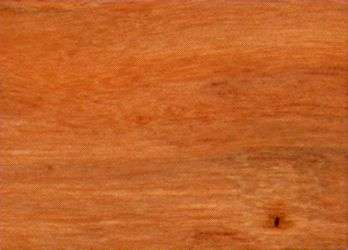
Coast mdoni (Syzygium cordatum)
Family: Myrtaceae
Common names: Coast mdoni, Curre, Gihlu, Imiswi, Kalunginsanvu, Kalunginsavu, Mecurre, Mosombo, Muchlo, Muchua, Mudoni, Muhlwa, Muhumbe, Muisu, Mukungu, Mukute, Muthwa, Mutiquiria, Mutwa, Mutxulu, Muwototo, Muzamba, Ohunyabariko, Omukondo, Timuchlo, Tucura, Umdoni, Umshui, Umswi, Vm-cozi, Water berry, Waterbessie, Waterboom, Waterhout, Watertree, Waterwood
Distributed in: Mozambique, South Africa, Zimbabwe (Africa)
Common uses: Boat building (general), Cabinetmaking, Flooring, Fuelwood, Furniture, Handles: general, Heavy construction, Joinery, Ladders, Light construction, Mine timbers, Paneling, Plywood, Posts, Railroad ties, Tool handles, Toys, Turnery, Vehicle parts
Environment profile: Rare
Tree size: Trunk diameter is 200-250 cm
Colors: the heart isRed, Yellowand the sapwoodWhite, Yellow.The grain isWeak figure, the textureResinous and oilyand the lusterMedium
Natural durability: Susceptible to insect attack, Very durable
Odor: Has an odor
Kiln Schedules: UK=A US=T2D4/T2D3 Fr=1
Kiln Drying Rate: Very slow
Drying Defects: Severe end splitting, Splitting
Ease of Drying: Variable results.
Tree Identification: Bole/stem form is buttressed
Blunting Effect: Moderate
Boring: Fairly easy to very easy
Cutting Resistance: Moderate to saw
Gluing: Surface Preparation
Mortising: Easy to mortise
Moulding: Good finishing
Movement in Service: Good finishing
Nailing: Possible if prebored, Pre-Boring Recommended
Planing: Planes well, to a good finish
Resistance to Impregnation: Sapwood is moderately resistant
Response to hand tools: Responds Poorly
Sanding: Fairly Easy to Very Easy
Veneering qualities: Difficult to veneer, Veneers easily
Steam bending: Poor to Very Poor Results
Screwing: Pre-boring recommended, Very Good to Excellent Results; Turning: Very Good to Excellent Results
Painting: Surface Preparation; Polishing: Very Good to Excellent; Staining: Very Good to Excellent; Varnishing: Good;
- Numerical data Metric
- Numerical data English
- Strength properties
- References
 |
 |
 |
 |
| Item |
Green |
Dry |
Metric |
| Specific Gravity |
|
|
|
| Density |
|
673 |
kg/m3 |
| Bending Strength |
485 |
761 |
kg/cm2 |
| Crushing Strength |
275 |
449 |
kg/cm2 |
| Hardness |
|
752 |
kg |
| Impact Strength |
|
|
cm |
| Shearing Strength |
|
170 |
kg/cm2 |
| Stiffness |
94 |
109 |
1000 kg/cm2 |
| Tangential Shrinkage |
|
|
% |
| Radial Shrinkage |
4 |
|
% |
| Weight |
657 |
528 |
kg/m3 |
| Maximum Load |
|
|
cm-kg/cm3 |
| Toughness |
|
|
cm-kg |
| Static Bending |
|
|
kg/cm2 |
|
 |  |  |  | | Item | Green | Dry | English | | Bending Strength | 6911 | 10833 | psi | | Density | | 42 | lbs/ft3 | | Hardness | | 1658 | lbs | | Maximum Crushing Strength | 3916 | 6397 | psi | | Shearing Strength | | 2419 | psi | | Stiffness | 1349 | 1564 | 1000 psi | | Weight | 41 | 33 | lbs/ft3 | | Radial Shrinkage | 4 | | % | | Tangential Shrinkage | 8 | | % | |
Density (dry weight) = 38-45 lbs/cu. ft. 1
Density (dry weight) = 46-52 lbs/cu. ft.
Max. crushing strength = medium
Bending strength (MOR) = low
Shrinkage, Tangential = moderate
Shearing strength (parallel to grain) = medium
Modulus of Elasticity (stiffness) = low
Hardness (side grain) = medium
Density (dry weight) = 53-60 lbs/cu. ft.
Density (dry weight) = 31-37 lbs/cu. ft.
Shrinkage, Tangential = large
Shrinkage, Radial = small
Shrinkage, Radial = moderate
Shrinkage, Radial = fairly large
Shearing strength (parallel to grain) = high
Modulus of Elasticity (stiffness) = very low
Modulus of Elasticity (stiffness) = medium
Bending strength (MOR) = medium
Ballenden, S.S.T.C.,1938,Um'doni or Waterwood (Syzygium cordata,Journal of the South African Forestry Association,No.1,pp60-61 [South,African Forestry Journal]Banks, C.H., Schoeman, J.P., Otto, K.P.,1977,The Mechanical Properties of Timbers with particular reference to South,Africa,South African Forestry Research Institute Bulletin,(Ed.,Schoeman, J.P. 1973 & Otto K.P. 1976,No.48Banks, C.H.,1954,The Mechanical Properties of Timbers with Particular Reference to those,grown in the Union of South Africa,Journal of the South African Forestry Association,No. 24 pp.44-65,[South,African Forestry Journal]Banks, C.H.,1959,Notes on the Timber of Syzygium cordatum,Journal of the South African Forestry Association,No.33,pp49-52,[South,African Forestry Journal]Bolza, E., Keating, W.G.,1972,African Timbers - the Properties, Uses and Characteristics of 700 Species,C.S.I.R.O. Div. of Building ResearchBrenan, J.P.M., Greenway, P.J.,1949,Check-lists of the Forest Trees and Shrubs of the British Empire,Imperial Forestry Institute, Oxford No.5 Tanganyika Territories Part 2Cardoso, J.G.A.,1961,Madeiras de Mocambique 7 - Syzygium cordatum,Serv.de Ag. Mocambique,Publ. Serie A, No.11Eggeling, W.J.,1940,Indigenous Trees of Uganda,Govt. Printer Entebbe UgandaGoldsmith, B., Carter, D.T.,1981,The Indigenous Timbers of Zimbabwe,Forestry Commission, Zimbabwe Research Bulletin No.9Scott, M.H.,1935,Weights of South African Growth Timbers,South African Department of Agriculture and Forestry Bulletin,No.145,Forest Products Institute, Forestry Series No.1Sim, T.R.,1921,Native Trees of South Africa,Union of South Africa Department of Mines and Industries Memoir No.3Tanzania Forest Division,1967,The Weights and Shrinkage of some Local Timbers,Tanzania Forest Div. Util. Sect. Technical Note,No.25White, F.,1962,Forest Flora of Northern Rhodesia,O.U.P. London
|








